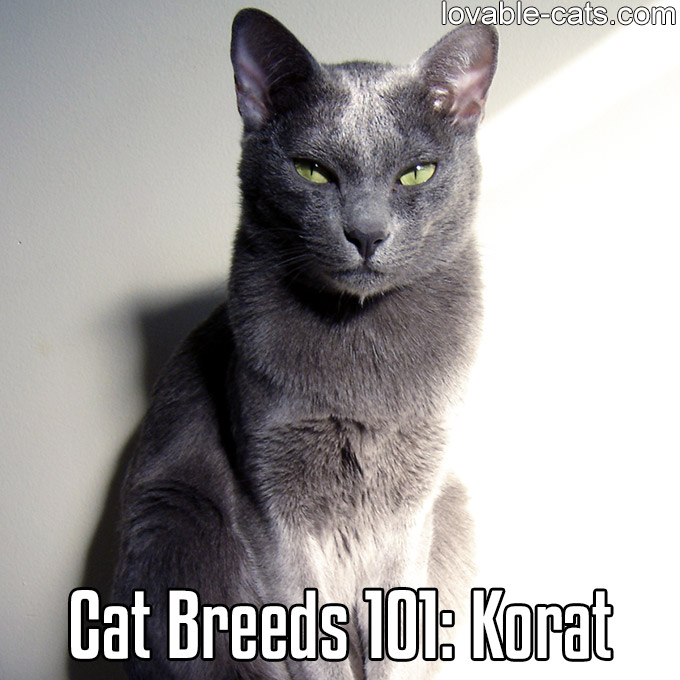
Cat Breeds 101: Korat – Image To Repin / Share
Photo: Wikipedia – lic. under PD
The Korat (pronounced as ko-raht) is one of the oldest and purest breeds found today. These cats originated in Thailand and the breed is named after the Nakhon Ratchasima province, typically called “Korat” by the Thai people. In the Thailand, the breed is known as a good luck cat and they are given in pairs to newlyweds or people who are highly esteemed for good luck. [1]
These silver-blue cats with emerald-green eyes were said to date back to the 14th century, based on their depiction in ancient literature. However it is still unclear when Korats first came to the West. A cat resembling a Korat was exhibited at a show in England in 1896 but whether it was truly a Korat or simply a blue Siamese is not known.
The first Korats to be imported into the United States arrived in 1959. They were given as gifts to an American couple who were returning to the U.S. after the husband had retired from the Foreign Service. The Cat Fanciers Association recognized the breed in 1967, two years after Korat breeders founded the Korat Cat Fanciers Association to promote the breed. Wherever they are found, all Korats can trace their origins to Thailand. They are a natural breed and have never been outcrossed to any other breed as part of their development. They are recognized by all the major cat associations. [2]
Their best feature is their short, single-layered coat. Korats have a unique color, defined as silver-tipped blue, which makes them look as if they are shimmering. The color appears to absorb light, giving a ‘halo’ effect. Their fur does not float off when they are stroked or petted, so most people with allergies will find their proximity tolerable. This breed only comes in the silver-tipped blue color. [3]
It is said that you can see five hearts in a Korat. Looking straight on at the cat, you can see the heart shaped head. The second heart is found by looking down over the top of the Korat’s head and the third heart is the nose. The fourth can be found in the muscular area of the chest when the cat is in a sitting position and the fifth is the heart of the cat itself. As the Korat matures, the heart shapes become more prominent. [3]
References:
[1] https://en.wikipedia.org/wiki/Korat
[2] https://cattime.com/cat-breeds/korat-cats
[3] https://cfa.org/Breeds/BreedsKthruR/Korat.aspx
